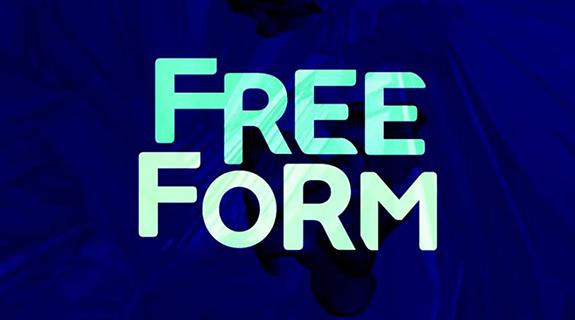In January 2016, ABC Family underwent a massive rebranding to become Freeform. But why, in an era of cord-cutting and evaporating audiences, would a thriving network that was beloved by millennial viewers decide to drop its familiar name for a new one?
“Actually,” Freeform SVP of marketing Nigel Cox-Hagan explained at ProximaBDA: The Conference 2016 explained Wednesday, “the fact that our network’s core demo is the most avid cord cutters drove the urgency to take such a radical leap.”
RELATED:
Freeform’s Rebrand Lives Up To Its New Name
Although ABC Family did well with women ages 18-34, largely due to hits including Secret Life of the American Teenager and Pretty Little Liars, the network was only attracting 25 percent of the potential audience in that demographic. To truly thrive, they needed to attract more viewers.
Cox-Hagan explained that the network did market research to find what differentiated ABC Family in the eyes of regular viewers and non-viewers. He quickly found that there was a major perception problem.
“Regular viewers found the network family-friendly, wholesome, fun, cool, and made for them,” he said. “Non-viewers are found us family friendly and wholesome, but not much else. Not modern, not fun, not cool, and absolutely not made for them.”
Knowing that it needed to free itself from the limitations of the “family” label, the network hired the naming company Lexicon to search for a more enticing moniker. Three thousand potential names were whittled down to 12 finalists, which were then shown to 1200 consumers.
“Not only was Freeform the clear winner among the finalists, but Lexicon told us that it had some of the highest positive attributions that they had ever seen,” Cox-Hagan said. “[Consumers] associated the name with a brand willing to take risks, inspiring stories and adventures, without boundaries.”
This was perfect for Freefall’s demographic, which the network likes to call “Becomers,” who are primarily at the magical point between their first kiss and first kid, full of possibilities.
Even though the name came relatively easily, the transition wasn’t without its challenges.
“Our biggest challenge was a lack of financial resources,” said Cox-Hagan. “We didn’t have the budget for a full-on paid media campaign, so our strategy had to be efficient and scrappy.”
To save, the network acquired most of their creative content through a single, big photo and video shoot in the fall (having their “becomer” aged talent embrace their youth and go on a road trip rather than stand in front of a green screen). It also knew it would have to depend on its fanbase for social outreach. The network also planned for a January launch date for three reasons:
- January represents change
- ABC Family gained over 100 million viewers in December due to its 25 Days of Christmas programming
- Pretty Little Liars and the new show Shadowhunters were both launching January 12 with significant ad campaigns. Incorporating the new name and logo into the shows’ promotions successfully merged old and new.
Of course, another network concern was that ABC Family fans would feel confusion and loss over the old name and logo.
“We needed to reassure our audience that we weren’t abandoning them,” said Cox-Hagan. “We started to respond to questions like why the hell are we changing the name in the first place.”
“And questions like, ‘Are we going to be some uber cool hipster brand with no room for sentiment and heart?’” (No, Freeform wasn’t canceling Christmas.)
Even though the rebrand has been a challenge, on the day of the launch Freeform was the most talked about network across social, amassing over 1.5 billion impressions. And six weeks later, Cox-Hagan said fans embraced the new more than executives had expected.
Sometimes the risk is worth the reward.
Tags:













































__twocolumncontent.jpg)











